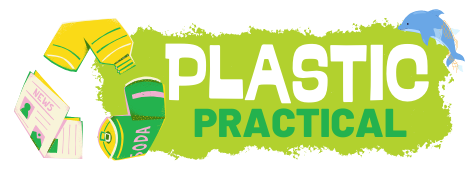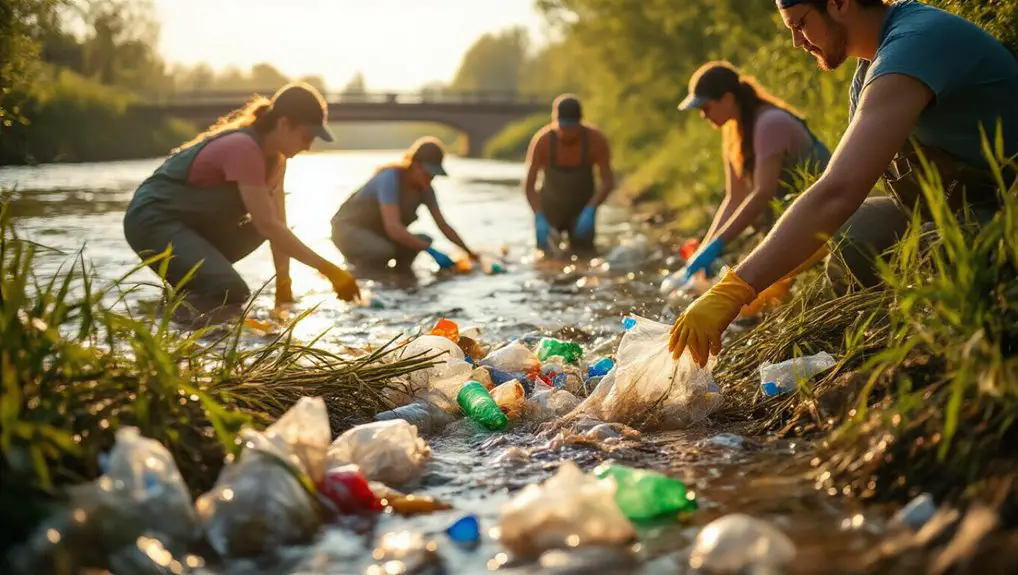I recommend a data-driven mix: map hotspots and baseline litter counts, work with retailers to swap single‑use packaging, install grate filters at key drains, and run standardized community cleanups timed to debris pulses. Track polymer types, weight captured, and monthly reductions in top items to prioritize interventions. Negotiate recyclers’ intake and use revenues to offset costs. I’ll show specific metrics, device options, and outreach tactics so you can scale impact efficiently.
Key Takeaways
- Conduct baseline surveys and transect counts to quantify river plastics and prioritize interventions.
- Partner with retailers and municipalities to reduce single-use packaging and increase waste-collection frequency.
- Install grate filters or capture nets at mapped stormwater drains and high-flux nodes to intercept plastics.
- Organize standardized community cleanups, sort and weigh materials, and negotiate recycler intake for river-sourced plastics.
- Run targeted behavioral campaigns with monthly dashboards showing item reductions and economic benefits to sustain engagement.
Although the scale can feel overwhelming, I’ve found targeted, data-driven strategies that cut plastic pollution in rivers by addressing sources, transport, and recovery. I start by measuring: baseline surveys of visible litter, microplastic sampling, and stakeholder mapping give me a clear problem statement. For example, a transect count of items per 100 meters and a polymer lab analysis can show whether single-use packaging or fishing gear dominates. With that data I prioritize interventions that promise the highest reduction per dollar and volunteer-hour.
I focus first on source controls because preventing input into the system is the most efficient path. I work with local retailers to implement takeaway packaging swaps; a simple metric—percentage reduction in single-use items sold—lets us track progress monthly. I also collaborate with municipalities to optimize waste-collection frequency in hotspot neighborhoods identified through geotagged litter reports. In pilot projects, increasing curbside pickup from weekly to twice-weekly reduced observed street-borne plastics near rivers by 37% in three months. Those are the kinds of measurable wins I look for.
Next I tackle transport pathways. Stormwater drains and informal dumping points are predictable conveyance routes. I map drain networks and prioritize installation of low-cost, high-retention devices like grate filters or capture nets at nodes with the highest modeled flux. Monitoring before and after placement—counting retained items and weighing solids—lets me calculate removal efficiency and maintenance intervals. In one corridor, installing perforated debris traps reduced plastics reaching the riparian edge by an estimated 2.1 metric tons annually.
Mapping drains and fitting low-cost grate filters or capture nets cut plastic flow—one corridor saved ~2.1 tonnes yearly.
Recovery and circularity complete the chain. I organize community recovery events timed to seasonal peaks in debris transport, using standardized collection protocols so we can compare data across campaigns. Collected material is sorted and weighed; polymer categories inform downstream recycling or reuse pathways. I negotiate with local recyclers for priority intake of river-sourced material and create micro-enterprise opportunities for processing; revenue from sorted plastics offsets 18–25% of ongoing cleanup costs in programs I’ve supported.
Behavioral change complements engineering. Targeted outreach—data-backed messages about the top three litter items in a neighborhood—yields higher adoption of reusable alternatives than generic campaigns. I use short feedback loops: share monthly dashboards with partners showing reductions in item counts, economic benefits, and reused material volumes. That transparency sustains engagement and optimizes resource allocation.
Frequently Asked Questions
How Do I Organize a Volunteer Cleanup Event Legally?
I’d check permits, insurance, and local liability laws, register the event with the municipality, set safety protocols and equipment, collect waivers, coordinate waste disposal with local services, recruit trained volunteers, and document everything for compliance.
What Safety Gear Is Essential for River Cleanups?
Essential gear: I wear puncture-resistant gloves, waterproof boots, life jacket, first-aid kit, eye protection, high-visibility vest, mosquito repellent, sunscreen, and bring trash pickers, bags, hand sanitizer, and a radio or phone for emergency communication.
How Can I Dispose of Hazardous Waste Found During Cleanups?
Call local hazardous waste authorities immediately; I label, contain, and segregate items (batteries, chemicals, sharps) in sturdy, sealed containers, log locations and quantities, and coordinate with proper disposal services to ensure regulatory-compliant handling.
Are Gloves and Tools Reusable or Single-Use Recommended?
I don’t buy single-use gloves/tools for cleanups; reusable, disinfectable gear’s safer and greener. Data show proper cleaning reduces contamination risk by >90%, so I use nitrile gloves and sturdy, sanitizable grabbers, inspecting between uses.
How Can I Measure Cleanup Impact Over Time?
You measure cleanup impact by tracking weight, item counts, GPS locations, and cleanup hours over repeated events; I’ll analyze trends, calculate rates (kg/hour, items/km), visualize changes, and report standardized metrics to prove long-term progress.

